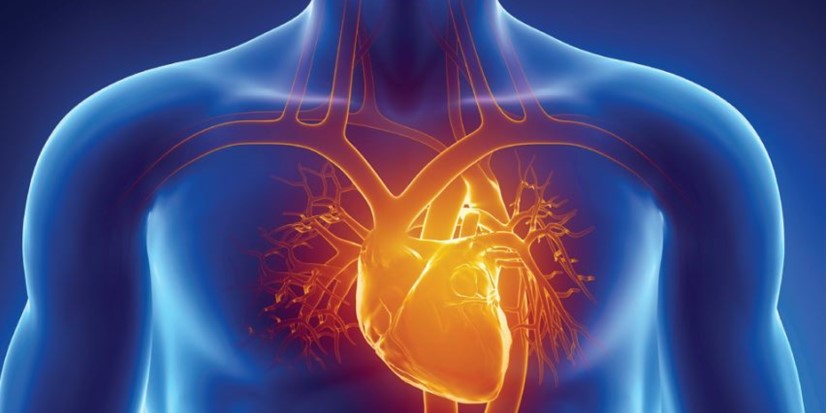Heart health after 60: Cardiology care for golden years
Heart health after 60: Cardiology care for golden years
Blog Article
Understanding the Significance of Cardiology in Modern Health Care Solutions
Cardiology plays an important duty in modern-day medical care, specifically as heart disease remains to be the leading cause of mortality worldwide. Advancements in diagnostics and treatment have transformed patient care, enabling earlier treatments and boosted end results. The change in the direction of preventive cardiology equips individuals to manage their wellness proactively. As modern technology proceeds to progress, the combination of innovative solutions might better redefine cardiology's influence on public health and wellness, prompting a closer exam of arising trends and their implications.
The Frequency of Heart Illness and Its Effect On Public Health
Heart disease stays the leading cause of fatality worldwide, its influence prolongs much beyond specific clients to affect public health and wellness systems and economies. The high frequency of cardiovascular disease positions a considerable pressure on health care sources, requiring raised funding for treatment, avoidance, and rehabilitation programs. Public wellness initiatives should resolve risk aspects such as obesity, cigarette smoking, and less active lifestyles, which contribute considerably to the rising incidence of heart conditions.Moreover, the economic worry related to heart illness is enormous, encompassing not just straight clinical costs but likewise indirect expenditures associated with lost efficiency and premature death. Areas encounter challenges in handling these expenses, usually leading to disparities in health care gain access to and results. As the populace ages and lifestyle-related threats remain to rise, the necessity for reliable cardiology interventions becomes paramount. Attending to heart illness is not only a matter of individual health but additionally a critical public wellness top priority.
Breakthroughs in Heart Diagnostics and Imaging Techniques
Recent developments in heart diagnostics and imaging strategies have actually reinvented the field of cardiology, enhancing the capacity to identify and check cardiovascular disease. Techniques such as heart MRI, CT angiography, and echocardiography have actually ended up being increasingly innovative, supplying comprehensive photos of heart structures and functions. These methods permit the early recognition of conditions like coronary artery condition, cardiac arrest, and valvular disorders.Moreover, developments in non-invasive diagnostics, such as wearable technology and remote surveillance devices, have actually equipped patients and medical care companies. These tools assist in real-time tracking of heart rhythms and various other important indicators, causing prompt interventions. Additionally, man-made intelligence is being integrated right into imaging analysis, boosting accuracy and effectiveness in diagnosis.
Advancements in Therapy Choices for Heart Issues
Recent improvements in cardiology have actually resulted in substantial developments in therapy alternatives for heart conditions. These consist of advanced surgical methods that boost procedural results and arising medications that provide new opportunities for treatment. As the field develops, these technologies play an important function in boosting patient care and results.
Advanced Surgical Techniques
Technologies in surgical techniques have changed the landscape of cardiology, supplying new hope for clients with heart problems. Minimally intrusive treatments, such as catheter-based treatments, have significantly minimized recuperation times and hospital stays. Techniques like robotic-assisted surgical treatment improve accuracy, enabling specialists to browse intricate physiological structures with higher precision. Improvements in imaging modern technology facilitate real-time visualization during procedures, boosting end results. Transcatheter aortic shutoff substitute (TAVR) exemplifies a development in treating aortic stenosis, enabling shutoff substitute without open-heart surgical procedure. Furthermore, hybrid methods that combine catheter-based and medical approaches supply tailored solutions for various heart problems. These sophisticated surgical strategies not just enhance patient safety and security however likewise expand therapy choices, underscoring the critical duty of advancement in contemporary cardiology practices.
Arising Treatments and medications
As the landscape of cardiology remains to progress, arising treatments and medicines play a crucial function in enhancing therapy options for heart problems. Advancements such as novel anticoagulants and progressed lipid-lowering agents have actually transformed the administration of cardiovascular conditions, significantly lowering individual morbidity and death. Furthermore, the growth of gene treatments and regenerative medicine uses promising opportunities for treating conditions formerly deemed permanent. Clinical tests are continually exposing the effectiveness of these therapies, pushing the borders of conventional therapies. Moreover, the combination of electronic health innovations promotes customized medication, permitting tailored treatment strategies based upon hereditary and lifestyle aspects. Collectively, these improvements emphasize the vibrant nature of cardiology, boosting patient outcomes and redefining requirements of care in modern medical care.
The Duty of Preventive Cardiology in Patient Care
Preventive cardiology plays a vital function in individual care by concentrating on the identification of risk elements that add to cardiovascular disease. With way of life adjustment techniques and early detection techniques, healthcare service providers can efficiently decrease the incidence of cardiovascular occasions - Dr Garcia. This aggressive strategy not just enhances client outcomes but additionally advertises long-lasting health and wellness
Risk Factor Recognition
While heart diseases remain a leading source of morbidity and death worldwide, efficient risk variable recognition works as a cornerstone of preventative cardiology. Determining risk factors such as high blood pressure, hyperlipidemia, family, and diabetes mellitus background is important for very early intervention. Medical care experts utilize different screening approaches to assess these variables, permitting customized safety nets. Furthermore, recognizing an individual's way of living options, such as smoking cigarettes and physical inactivity, better informs threat assessments. This complete evaluation allows medical professionals to develop tailored care plans targeted at mitigating risks. By focusing on risk variable identification, health care systems can improve patient end results and decrease the general worry of cardiovascular illness, inevitably adding to improved public health and wellness approaches and resource allotment.
Way Of Living Alteration Techniques
A wide variety of researches highlights the critical role of way of life adjustment approaches in reducing cardiovascular disease risk. These techniques include nutritional adjustments, raised exercise, smoking cessation, and weight administration. By adopting a heart-healthy diet rich in fruits, vegetables, whole grains, and lean healthy proteins, people can decrease cholesterol degrees and blood stress. Normal physical task reinforces the heart and boosts total cardio wellness. In addition, stopping cigarette smoking considerably minimizes the danger of cardiovascular disease and improves recovery rates for those with existing problems. Weight monitoring additionally adds to cardiovascular health by mitigating various other threat aspects such as diabetic issues and hypertension. Implementing these lifestyle transforms not only promotes specific health however also functions as a keystone of precautionary cardiology in their website patient treatment.
Early Detection Strategies
Way of life modifications greatly add to decreasing cardiovascular condition dangers, yet they are most reliable when coupled with very early discovery techniques. Preventative cardiology highlights the significance of determining potential heart concerns before they rise into significant conditions. Strategies such as blood pressure monitoring, cholesterol screening, and progressed imaging innovations like echocardiograms play crucial duties in assessing cardio health. Biomarkers and hereditary testing likewise boost the precision of very early detection, permitting customized preventive approaches. Regular heart threat assessments encourage health care service providers to intervene proactively, potentially preventing cardiovascular disease and strokes (Cardiology Jupiter). By incorporating these very early detection techniques right into routine treatment, clients can take advantage of prompt lifestyle interventions and targeted therapies, inevitably enhancing and enhancing end results quality of life
Integrating Technology Into Cardiology Practices
As improvements in modern technology remain to reshape various areas, the assimilation of innovative tools and systems into cardiology methods has ended up being crucial for enhancing person care and outcomes. Telemedicine systems permit cardiologists to keep track of individuals from another location, boosting accessibility to care while minimizing the worry on medical care centers. Wearable tools, such as smartwatches, make it possible for continual heart price surveillance, signaling both people and medical professionals to possible concerns in real-time. In addition, expert system (AI) is being used to evaluate huge quantities of cardiac data, assisting in very early medical diagnosis and tailored therapy plans. Advanced imaging methods, including 3D echocardiography, enhance visualization of heart frameworks, bring about a lot more accurate interventions. Digital wellness documents (EHRs) improve client information monitoring, making sure that cardiologists have instant access to crucial information. Together, these technological developments are transforming cardiology, advertising positive management and boosted health and wellness outcomes for people with cardiovascular conditions.
The Relevance of Individual Education And Learning and Interaction
Person education and interaction play a pivotal duty in the management of cardiovascular health. By furnishing patients with understanding concerning their conditions, treatment alternatives, and lifestyle modifications, medical care companies encourage individuals to take an active function in their treatment. This proactive method can cause boosted adherence to prescribed medicines, nutritional adjustments, and exercise programs, inevitably reducing the risk of complications.Engagement likewise cultivates a solid patient-provider relationship, encouraging open communication and depend on. When people feel notified and included, they are most likely to voice problems and ask questions, which can lead to better scientific results. In addition, educational resources, such as workshops or digital systems, can enhance understanding and advertise self-management strategies. Overall, prioritizing patient education and interaction is vital for improving cardiovascular health and wellness, enhancing lifestyle, and decreasing health care costs connected with cardiovascular diseases.
Future Trends in Cardiology and Their Potential Influence

Frequently Asked Inquiries
What Way Of Life Modifications Can Decrease Heart Problem Threat?
The present question addresses way of living adjustments that can significantly reduce heart problem danger. Cardiology. Adopting a well balanced diet plan, engaging in normal physical task, maintaining a healthy and balanced weight, handling stress, and staying clear of tobacco can especially enhance cardio health and wellness
How Can I Identify Early Indicators of Heart Problems?
Identifying early indicators of heart problems entails monitoring signs and symptoms such as chest discomfort, shortness of breath, tiredness, and irregular heartbeat. Prompt awareness of these indications can prompt needed medical examination and treatment for much better end results.
What Are the Differences Between Cardiologists and Heart Surgeons?
The differences between cardiologists and heart surgeons lie in their duties; cardiologists primarily identify and take care of heart problems through non-invasive techniques, while heart surgeons carry out medical treatments to correct structural heart problems. Each plays an essential, distinct function.

Just how Often Should I Get My Heart Health Checked?
The frequency of heart wellness checks varies based on specific danger elements. Generally, grownups must undergo analyses each to two years, while those with present conditions may call for more constant evaluations as recommended by medical care experts.
What Role Does Genes Play in Heart Disease Threat?
Genetics greatly affects heart problem threat, with familial patterns showing inherited problems. Particular genetics can predispose people to hypertension, cholesterol problems, and other cardiovascular troubles, highlighting the value of hereditary screening in reviewing heart health and wellness. Heart condition remains the leading reason of death internationally, its influence prolongs much beyond private people to affect public health and wellness systems and economies. Public health and wellness campaigns should attend to threat elements such as excessive weight, smoking, and inactive way of livings, which contribute significantly to the climbing occurrence of heart conditions.Moreover, the economic concern linked with heart condition is immense, including not just straight medical prices but like it also indirect expenses associated to shed efficiency and premature death. Precautionary cardiology plays a crucial role in client care by concentrating on the recognition of threat variables that view it now contribute to heart disease. Synthetic intelligence (AI) and maker understanding are boosting diagnostics and patient monitoring, enabling early detection of heart illness. The differences between cardiologists and cardiac cosmetic surgeons lie in their functions; cardiologists mainly identify and handle heart conditions with non-invasive methods, while cardiac surgeons perform surgical treatments to deal with architectural heart concerns.
Report this page